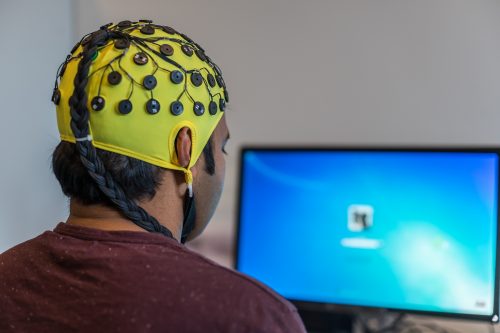A team of researchers from Ben-Gurion University of the Negev discovered that brain waves may predict, and even promote prevention of epilepsy after a head injury

Researchers from Ben-Gurion University of the Negev have discovered a promising biomarker that can be used to predict and possibly even prevent epileptic seizures in head-injured patients, using EEG recordings of theta brain waves.
The researchers' findings, which were published in The Journal of Neuroscience, show how EEG recordings are used to detect changes in brain wave patterns over time and can predict whether a patient who has experienced a head injury will develop epilepsy. Epilepsy is a disease of the central nervous system, which causes seizures in which people experience uncontrollable shaking and movement or loss of consciousness that may endanger their lives.
"Post-traumatic epilepsy (PIE) is a severe and unavoidable consequence of a traumatic head injury or stroke that develops among 10-40% of head-injured individuals months or even years after the injury" says Prof. Alon Friedman, from the Center for Brain Imaging Research and the Zolotovsky Center for Brain Research.
More than two million people across the United States and about 50,000 in Israel have experienced or are experiencing a certain type of epilepsy. In addition to suffering from unpredictable and difficult-to-control seizures, patients with PIE often suffer from neuropsychiatric disorders such as decreased cognitive abilities and depression.
"Although there are new discoveries of drugs that may prevent epilepsy, we first need to identify biological markers in the brain that make it possible to predict which patients will develop the disease, so that we can know who needs treatment," says Prof. Friedman.
As part of the study, the team of researchers discovered that TAT waves, measured through repeated EEG recordings, can predict epilepsy in five different models of the disease in mice and rats. Monitoring continuous records, from the time of the injury to the appearance of random seizures, allowed the research team to discover a pattern of decreased theta wave activity in the period before the onset of the disease. This pattern was also found to be associated with sleep and wake cycle disorders.
"These findings give great hope and will be able to lead to studies in humans, which will lead to new predictive approaches to the disease and finally - to the treatment and prevention of epilepsy, as well as other neuropsychiatric complications that result from brain injury" says researcher Dan Milikowski, a medical student and PhD student at the Zolotowski Research Center the brain.
The research group also included Itai Weisberg, Lin Kaminecki, Esnat Schaffenbauer, Liron Sheintoch, Daniel Zelig and Yehotan Ofer from the Zolotovsky Center for Brain Research; Christina Lippmann of the Institute of Neurophysiology, Charita University Berlin, Germany; Federica Prigririo, Massimo Rizzi and Anna-Maria Vezzani from the Department of Brain Research, Experimental Neurology, Mario Negri Institute of Pharmacology in Milan, Italy.
The research was supported by the European Union under the Seventh Framework Program, the Israel-United States Binational Foundation, the German Research Foundation and the Canada Foundation for Innovation.
See more on the subject on the science website:
